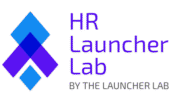Health insurance is one of the most requested benefits by employees. For small and growing businesses, offering health insurance can make the difference between attracting skilled workers and losing them to larger employers.
Health benefits also support your team’s well-being and reduce absences due to untreated medical problems. At the same time, providing health insurance is often one of the largest expenses for a business. This means every choice—plan type, coverage level, cost-sharing—must be carefully thought through.
In this article, you’ll learn exactly how to design a health insurance package that fits your business stage, supports your team, and keeps costs manageable.
- The Value of Offering Health Insurance
- Common Types of Health Insurance Plans for Small Businesses
- What Makes Up a Health Insurance Plan
- How Employers Can Manage Health Insurance Costs
- Offering Dental, Vision, and Other Benefits
- The Role of a Health Insurance Broker
- Legal Considerations and Compliance
- Step-by-Step: How to Build a Health Insurance Package
- Conclusion: A Smarter Way to Offer Health Benefits
- Read More about Compensation & Benefits
Disclaimer #
The information on this site is meant for general informational purposes only and should not be considered legal advice. Employment laws and requirements differ by location and industry, so it’s essential to consult a licensed attorney to ensure your business complies with relevant regulations. No visitor should take or avoid action based solely on the content provided here. Always seek legal advice specific to your situation. While we strive to keep our information up to date, we make no guarantees about its accuracy or completeness.
This content may contain affiliate links, meaning we receive a commission if you decide to make a purchase through our links, at no cost to you.
For more details, refer to our Terms and Conditions.
